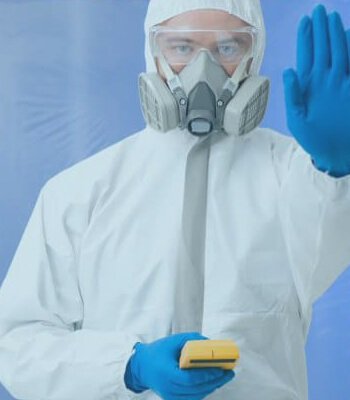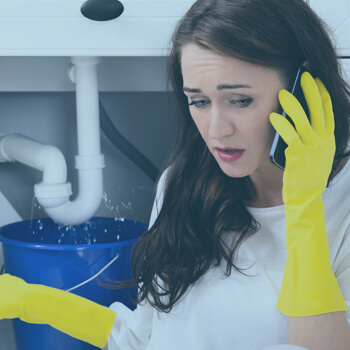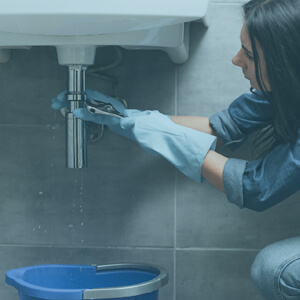What Is Sewage?
To start, sewage is wastewater that is generated by a community of people. There are municipal sewage systems as well as personal septic tank systems. These systems are necessary for preventing people from coming into contact with and breathing in the toxic fumes and contaminants often contained within communal wastewater.
Is Sewage Dangerous?
Sewage water is very dangerous, and should be handled with the utmost care in order to prevent transference and infection. For the same reasons you’d wish to wash your hands after excreting your own waste, a person that comes in contact with wastewater is at extreme risk for contracting disease-causing bacteria, parasites and viruses.
Not surprisingly, wastewater from varying locations have tested positive for the coronavirus, making it even more of a threat to an already threatened population in modern day society.
In addition to COVID-19, there are many other types of diseases, bacteria and parasitic organisms found within human wastewater. These include:
- Hepatitis A
- Salmonella Infection
- E.coli
- Campylobacteriosis
- Gastroenteritis
These diseases enter the system of an individual through contact with the eyes, nose, mouth or ears. Once inside, these bacterial contaminants wreak havoc on human health, causing extreme symptoms that may require hospitalization, and may even cause death.

The Process for Sewage Cleanup
In order to prevent the above scenario, it is important that the sewer systems previously mentioned are in good working order.
For municipal sewage systems, raw sewage is first flushed down the toilet where it travels to the main sewer line for the city. From there, the wastewater travels through a series of pipes until it finally reaches the wastewater treatment facility. At this point, the wastewater is cleansed, treated and dispersed back into local bodies of water to be utilized once again.
Septic tanks, on the other hand, are used by structures that don’t have access to municipal sewage systems, or choose not to. In either event, they are simple systems that break down and treat wastewater by use of anaerobic processes.
Sewage Backups Causes
Sometimes, the previously described systems, like any other system, fail at some point or another. While there are certainly things you can do to reduce the risk of wastewater system failure, the truth is that it is bound to happen to countless residents, businesses and establishments over a period of time.
There are many causes for why sewage backups occur. One of which is a malfunctioning piping system. Because pipes can become corroded, aged and worn with time, they are especially susceptible to losing their function. As grime and debris continually builds up within the system, the waste that is flushed may eventually find itself with nowhere to go. At this point, your toilet is likely to overflow, and may even back up into your sink, bathtub or shower.
Another cause of sewage backups are subtle shifts, or settling, of pipes. This, again, is an issue of functionality, as improperly fitted or even incorrectly installed pipes will not stand to allow wastewater to flow the way it should. All of this and more can lead to raw sewage soaking into your floor, and potentially, compromising your health.

Sewage Clean Up – What to Expect
As you might imagine, cleaning up a situation that involves raw sewage is going to take skill and technique. It certainly isn’t for the faint of heart, but it also isn’t for anyone who isn’t professional trained. Because the effects of raw sewage on human health are so severe, property owners shouldn’t take any chances. Always contact a professional cleaning crew immediately to help with sewage backups.
Upon arrival, cleaning crews will wear proper protective safety equipment and will attempt to contain the overflow to as small of an area as they are able. If possible, they will also stop the flow of water.
Once water flow has been stopped and the area contained, cleaning crews will secure the area, if they haven’t already, so that no unauthorized persons are permitted into the affected space. This includes pets, children and the elderly.

After the area has been secured, the cleaning crew can begin the discarding process. Items that are highly-porous or that may prove difficult, or risky, to clean will be thrown out. This may include items such as toys, stuffed animals, soaked wall-to-wall carpeting and more.
Hard surfaces and other materials that have been deemed salvageable will be disinfected using wet cleaning methods, and will then be left to air dry. The remedial team may open windows to further ventilate the area.
Crews will then disinfect the tools they used to clean, and will take to caring for themselves by commencing proper hand-washing and removal of any soaked or soiled equipment used.
Bear in mind that the above is only a general guideline as to what might be expected from a professional cleaning crew. Every company is different, and the techniques used may vary from situation to situation, depending on the need.
Dangers of D.I.Y. Cleanup
In addition, doing your own cleaning can result in the destruction of items that should have been replaced at the onset of the back up event. A great example of this would be carpeting or rugs that have been impacted by wastewater. By choosing to spot clean, or clean the surface of, these types of materials, you aren’t really addressing the issue. In reality, these items need to be thrown out, and wall-to-wall carpeting replaced in order to eliminate the odor and toxins associated with sewage.
Lastly, by tackling your own sewage overflows, microbes can develop and multiply, such as mold and fungi, to produce an environment that is unsafe. This happens because the longer that water-saturated items sit, the better the conditions for bacteria, microbes and fungi to reproduce. As a result, unless these issues are confronted with adequate sanitation treatments and drying procedures, your home or business will only become a breeding ground for mold and bacteria as time goes on.
If you do find yourself in a situation where you, for one reason or another, cannot hire professional help, or if the situation is relatively small, you will need to protect yourself and others.
To do this, restrict access to the affected area for all children, animals and health-compromised individuals. As for you and whomever may be assisting you in the clean-up task, proper personal protective gear must be worn. We recommend goggles to prevent splash back, rubber boots and rubber gloves to start.
Upon beginning the cleanup task, be sure to throw away any soaked penetrable items, especially toys, stuffed animals, rugs and the like. Soaked cardboard and other materials should also be removed, immediately.
Once highly porous and unsalvageable items have been removed, begin disinfecting hard surfaces using diluted bleach where applicable. Bear in mind that bleach may ruin certain surfaces, and as such, should be used with caution.
If you find that a surface or surfaces cannot be effectively disinfected, it is best that you discard the items when possible or involve the help of a specialist.

Symptoms and Prevention
While there isn’t always much you can do to prevent a sewer backup, there are steps you can take to reduce the likelihood of them happening.
One of the best ways to prevent sewage backups is to hire a professional plumber to inspect your pipes on an annual basis. Using updated technology and tools, plumbers today have the equipment needed to detect and address potential clogs before they turn into major issues.
In addition, you may wish to watch what you put down your drains, toilets and sinks. Foreign objects such as toys getting lodged in your pipes are a surefire way to provoke a potential backup, as well as excess toilet paper, grease and other water-flow impending sediments that can serve in clogging up your pipes.
Raw Sewage Must Be Handled With Care
All in all, a sewage backup should always be handled professionally to keep all occupants of the affected structure safe. Diseases and illnesses associated with contact with sewage, whether direct or indirect, have shown to have terrible, and even fatal, results on human health. Rather than take the risk, contact your local biohazard company for the effective handling of sewage backup situations involving your home or business.
Our Services
- Biohazard Cleaning Services
- Blood Clean Up Services
- Crime Scene Cleanup Services
- Fire Restoration Services
- Hoarder House Cleaning Services
- Homeless Encampment Cleanup
- Infectious Disease Decontamination Services
- Fentanyl Decontamination
- Meth Lab Cleanup Services
- Mold Remediation Services
- Odor Remediation Services
- Water Damage Restoration
- Unattended Death Clean Up
- Suicide Cleanup
- Sewage Cleaning Services
- Rodent Cleanup Services

